The livestock sector in the Middle East is highly dynamic, in response to rapidly increasing demand for meat and poultry products. The increasing demand for livestock products have been largely driven by human population growth, income growth and urbanization. For more you can visit http://alfaculture.com
Monday 29 June 2015
Friday 19 June 2015
Hydroponic Farming - No More Concern of Adverse Weather Condition or Shortage of Farmable Lands
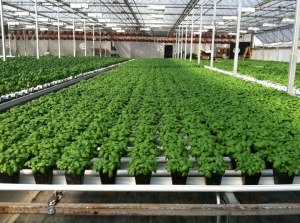 The Aztecs and Babylonian cultures grew plants without soil so technically they were employing a form of hydroponic. Our science and technology have improved considerably since the times of the Aztecs and Babylonians.
The Aztecs and Babylonian cultures grew plants without soil so technically they were employing a form of hydroponic. Our science and technology have improved considerably since the times of the Aztecs and Babylonians.
Indoor Hydroponic systems are nowadays considered as the main attempt in the field of modern agriculture. It is easy to explain, why the hydroponic agriculture is turning out to be a global phenomenon. The answer is not just the growing desires among the cultivators to accomplish more, but also the fear arising within the society regarding the ambiguity of climate having the escalating effects on their harvest.
As the people are becoming more and more environmentally conscious, the locally grown food supplies are getting preference in comparison to food sources that are not grown locally. Hydroponic system offers not just an effective alternative for growing yields, but are in harmonize with environmentally-friendly emotion of the public.
And it’s gainful in terms of expenditure, as the cultivators have more liberty to try the mixture of inputs with each cycle, preserving supplies such as nutrients and water.
A commercial farmer will obviously look for the utmost use of the resources to prevent any waste. This theory is used in each aspect, whether it is the growth medium or the nutrients.
Being a soil-less culture, a variety of growth media are being employed in commercial hydroponic systems. Clay pebbles, Rockwool, Perlite, coconut fibers are kept in air suspension to boost the nutrients saturation collectively eradicating the role of a middle man.
Working through several obstacles, hydroponic system has proved itself to be a productive agriculture technique, as around twenty-thousand to twenty-five thousand hectares of land in the earth are under hydroponics farming giving up to 6-8 billion dollars worth of production.
So, no more concern of adverse weather condition or shortage of farmable lands. Growing your favorite fruits or vegetables indoor is now a child play with hydroponic farming.
Friday 5 June 2015
Alfaculture To Change The Future Of Livestock Industry
The global warming and unpredicted climatic conditions has taken farmers to hold close sustainable livestock feed production methods. Many farmers are turning to hydroponic and greenhouse technologies as a risk management strategy, especially hydroponic fodder production to feed livestock. For more details visit: alfaculture.com
Sunday 10 May 2015
What Is Alfaculture Or Hydroponic Green Fodder
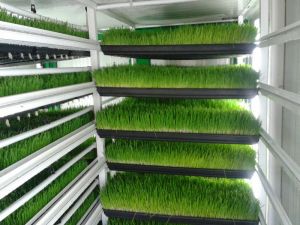 Alfaculture is also known as Hydroponic green fodder. Also, the generation of hydroponic green foods or Alfaculture is one such route through which you can adequately develop and produce the right nourish for your animals. The healthful advantages of hydroponic green grains (grew grains) are best fit for all animals including, sheep, cows, steeds, goats, chickens, that give animals enhanced development and general wellbeing.
Alfaculture is also known as Hydroponic green fodder. Also, the generation of hydroponic green foods or Alfaculture is one such route through which you can adequately develop and produce the right nourish for your animals. The healthful advantages of hydroponic green grains (grew grains) are best fit for all animals including, sheep, cows, steeds, goats, chickens, that give animals enhanced development and general wellbeing.
Hydroponics innovation has come up to develop grub for homestead creatures, as a distinct option for routine technique for green feed creation. It is a very much acknowledged truth that encouraging dairy creatures is fragmented without incorporating green grain in their eating regimen.
The word hydroponics has been gotten from the Greek word 'water working'. Hydro signifies "water" and ponic signifies "working" and it is an innovation of developing plants without soil, yet in water or supplement rich answer for a brief time. The hydroponics green grub creation unit comprises of a nursery and a control unit.
The span of the green house is more or less 25 feet (length) x 10 feet (width) x 10 feet (stature) and can possibly create 600 kg of green grain every day in seven days. Inside the green house, racks are available and every rack contains various lines, in which plate containing doused seeds are suited. Channels containing miniaturized scale foggers are fitted simply over the plate for water hazing, which eventually keeps up the nursery mugginess.
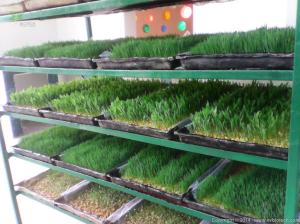 Distinctive sorts of grub like maize, wheat, cow pea, and so forth can be developed by hydroponics innovation. Feed sprouts are delicate and youthful, the likeness crisp green grass. In that capacity, they are exceedingly satisfactory and nutritious to different kinds and classes of domesticated animals. On a dry matter premise, hydroponic grain contrasts positively and different nutritious feedstuffs.
Distinctive sorts of grub like maize, wheat, cow pea, and so forth can be developed by hydroponics innovation. Feed sprouts are delicate and youthful, the likeness crisp green grass. In that capacity, they are exceedingly satisfactory and nutritious to different kinds and classes of domesticated animals. On a dry matter premise, hydroponic grain contrasts positively and different nutritious feedstuffs.
Alfaculture has a higher nutritious value than the customary green grub. In the circumstances where grains can't be developed; agriculturists can deliver hydroponics green feed for their creatures.
Sunday 19 April 2015
Alfaculture- Innovative Technology For Production Of Hydroponic Green Fodder
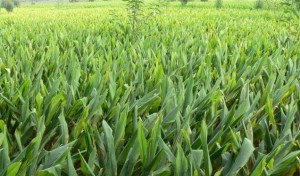 Hydroponic green fodder production or Alfculture is the most viable option for feeding sheep, goats and other livestock. The interest worldwide is increasing for hydroponic fodder as a feedstuff for sheep, goats, and other livestock. As all are aware of, Hyroponics is the science of soilless farming; it is the method of growing plants without soil. Only moisture and nutrients are provided to the growing plants. Hydroponic growing systems produce a greater yield over a shorter period of time in a smaller area than traditionally-grown crops.
Hydroponic green fodder production or Alfculture is the most viable option for feeding sheep, goats and other livestock. The interest worldwide is increasing for hydroponic fodder as a feedstuff for sheep, goats, and other livestock. As all are aware of, Hyroponics is the science of soilless farming; it is the method of growing plants without soil. Only moisture and nutrients are provided to the growing plants. Hydroponic growing systems produce a greater yield over a shorter period of time in a smaller area than traditionally-grown crops.
Hydroponic green fodder production system or Alfaculture is a year-round growing system that produces a consistent quantity and quality of livestock feed or green fodders regardless of weather conditions.
Alfaculture units are usually used to sprout cereal grains, such as barley, oats, wheat, sorghum, and corn, or legumes, such as alfalfa, clover, or cow peas. Barley is the most commonly grown forage, because it usually gives the best yield of nutrients.
Alfaculture units usually consist of a framework of shelves on which metal or plastic trays are stacked. After soaking overnight, a layer of seeds is spread over the base of the trays. During the growing period, the seeds are kept moist, but not saturated. They are supplied with moisture and nutrients, usually via drip or spray irrigation. Holes in the trays facilitate drainage and the waste water is collected in a tank.
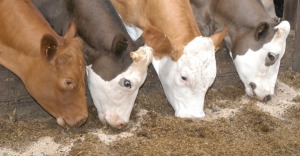 The seeds will usually sprout within 24 hours and in 5 to 8 days have produced a 6 to 8 inch high grass mat. After the mat is removed from the tray, it can go into a feed mixer or be hand-fed to livestock. Livestock will eat the whole thing: seeds, roots, and grass. There is minimal waste.
The seeds will usually sprout within 24 hours and in 5 to 8 days have produced a 6 to 8 inch high grass mat. After the mat is removed from the tray, it can go into a feed mixer or be hand-fed to livestock. Livestock will eat the whole thing: seeds, roots, and grass. There is minimal waste.
Alfaculture units can be set up in any building, including a garage or basement, a greenhouse is ideal because temperature, light, and humidity can be precisely controlled. Efficient, year-round production of green fodder is possible under optimal environmental conditions; approximately 70°F, 60 percent humidity, and 16 hours of light can produce maximum yields.
Wednesday 15 April 2015
Alfaculture To Meet Middle East’s Increasing Livestock Feed Demand
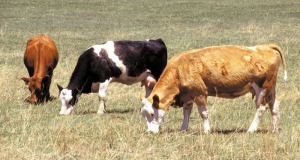 The Middle East and North Africa (MENA) region has been a rapidly growing market for livestock products and red meat exports in the past decade. According to the exporters from India and Australia, the MENA countries are now increasingly depending on foreign imports of cattle and sheep and demanding high value portions of quality red meet. The fast growth in the hospitality industry had lead to a major revive in the livestock industry; the increasing population in the region due to its high economic prospects is also a major growth factor.
The Middle East and North Africa (MENA) region has been a rapidly growing market for livestock products and red meat exports in the past decade. According to the exporters from India and Australia, the MENA countries are now increasingly depending on foreign imports of cattle and sheep and demanding high value portions of quality red meet. The fast growth in the hospitality industry had lead to a major revive in the livestock industry; the increasing population in the region due to its high economic prospects is also a major growth factor.
The country is importing majority of its livestock products from other countries all over the world to meet the increasing demand. Livestock expansion projects are growing around the GCC region; despite the truth that almost all the GCC countries are highly dependent on livestock imports from other regions of the world to meet their domestic demand.
All GCC countries are exploring new ways to improve their poultry and livestock sector through enhanced domestic production. This gives an excellent opportunity for relevant product manufacturers and service providers to capitalize on this sector. The adaptation of modern agricultural practices for the production of livestock feed and the incorporation of such techniques in the livestock rearing can make wonders in the industry which indeed lead to limited export needs.
Sustainable livestock feed production requires advanced farming practices such as Alfaculture, in which the production of green fodders are carried out through the method of soilless farming- Hydroponics. Hydroponic green fodder production or Alfaculture is sustainable in many ways, as it requires only less water and arable land for the plant cultivation. Hydroponic green fodders are the most sustainable livestock feed and the best suited for the MENA region.
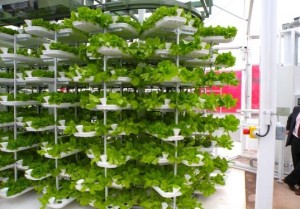 Cattle, sheep and goats play an important role in the emerging markets in GCC countries: their milk and meat are important protein sources for the people in the region. The production rate of livestock and dairy products in the MENA countries is higher than many other developed nations in the world. According to experts, per capita consumption of animal meat and products could rise by a further 44%, by the year 2030.
Cattle, sheep and goats play an important role in the emerging markets in GCC countries: their milk and meat are important protein sources for the people in the region. The production rate of livestock and dairy products in the MENA countries is higher than many other developed nations in the world. According to experts, per capita consumption of animal meat and products could rise by a further 44%, by the year 2030.
There have been sharp increases in livestock numbers in the Middle East countries, causing grazing pressures on limited arable areas to surpass their sustainable capacity; and Alfaculture or Hydroponic green fodder production is the most convenient and healthy solution to meet the issue.
Monday 13 April 2015
Why Hydroponic Green Fodders are the best choice for livestock animals
Green fodders produced by growing seeds without soil but in water or nutrients rich solutions are known as hydroponics green fodder and the production method is termed as Alfaculture. Hydroponics green fodder production or Alfaculture is a method of cultivating livestock feed mostly in green houses under controlled environment, in nutrient rich water.
Green fodder produced in an Alaculture system would have many benefits as it is capable to fulfill bulk of animal easily and quickly, hydroponic green fodders are a major source of vegetable protein, it is a good source of carbohydrate (soluble and fibrous) and good source of minerals. Hydroponic green fodders are rich in essential vitamins and a good source of water (approx. 15-25% water).
The Alfaculture units are built with a greenhouse (for growth of fodder) and a control unit, (for regulation of light, temperature, humidity and water) for optimum growth of fodder. And generally in an Alfaculture system, fodders are grown in trays in 7 days cycle excluding the day for seed soaking.
Feeding of hydroponics green fodder produced in Alfaculture units are more beneficial to all livestock due to their high nutritional values. Green fodders are highly succulent and relished by dairy animals. For instance; 7-8Kgs of Alfaculture maize green fodder can replace one kg concentrate mixture fodder. As it is highly succulent, it is recommended to offer maximum 20 kg hydroponic green fodder per day per animal.
Monday 23 March 2015
Why Alfaculture Is The Most Practical Solution To Feed Livestock?
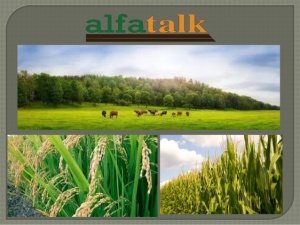 Hydroponics farming for animals or Alfaculture is popular all over the world with farmers, ranchers, horsemen and zoos. It is a compact, simple, and cheap way to produce high quality green forage for farm animals. Any kind of grass or cereal grains can be sprouted in a well maintained Hydroponic growing system or in Alfaculture. Addition of any nutrient solution which is the growing media, increases the food value of the final product.
Hydroponics farming for animals or Alfaculture is popular all over the world with farmers, ranchers, horsemen and zoos. It is a compact, simple, and cheap way to produce high quality green forage for farm animals. Any kind of grass or cereal grains can be sprouted in a well maintained Hydroponic growing system or in Alfaculture. Addition of any nutrient solution which is the growing media, increases the food value of the final product.
Alfaculture generally takes about five to eight days to grow from seed to an 8 inch mat of grass, packed with vitamins and minerals. Types of plants typically grown for livestock forage include alfalfa, barley, oats, clover, grass and wheat.
Alfaculture or growing livestock forage in a hydroponic system might seem like an expensive way to feed dairy or beef cattle or other livestock, but in most situations it could prove very helpful. Livestock forage may include any agricultural foodstuff used specifically to feed domesticated livestock, such as chickens, horses, pigs, cattle and goats. The term refers to food given to animals, rather than the food they feed for themselves.
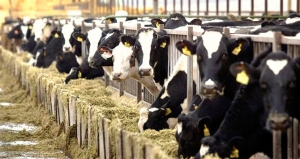 There are so many companies nowadays that are offering the forage systems, as well as other systems for hydroponic growing. Alfaculture could provide producers with an excellent source of forage and cattle are able to eat the whole thing, sprout mat and all. With Alfaculture, plants can be grown in a small amount of water on a mat with added nutrients – but without soil. Alfaculture apply hydroponic or the soilless farming technology for the production of fresh feed which can be grown anywhere under any climate situation. A thousand pounds of barley, wheat or corn grows into 7,000-8,000 pounds of feed in only 10 days.
There are so many companies nowadays that are offering the forage systems, as well as other systems for hydroponic growing. Alfaculture could provide producers with an excellent source of forage and cattle are able to eat the whole thing, sprout mat and all. With Alfaculture, plants can be grown in a small amount of water on a mat with added nutrients – but without soil. Alfaculture apply hydroponic or the soilless farming technology for the production of fresh feed which can be grown anywhere under any climate situation. A thousand pounds of barley, wheat or corn grows into 7,000-8,000 pounds of feed in only 10 days.
Alfaculture systems generate a much better yield over a shorter period of time in a smaller area than traditionally-grown crops. Alfaculture is a year-round growing system that produces a consistent quantity and quality of plant material, regardless of outside weather. Hydroponics Livestock forage is becoming more important to farmers worldwide due to the lack of arable farm land. For example, Alfaculture has been used by dairy producers with limited arable land. Livestock farmers can grow their forage in a soilless farming f facility, rather than having to find more land. Alfaculture allow farmers to grow any kind of fresh grass forage for their ruminants or poultries, irrespective of land or weather conditions which are the biggest obstacles for traditional green fodder production.
Thursday 19 March 2015
Alfaculture – A Sustainable Solution For Livestock Feed Shortage
Invest in hydroponics for the production of forage might seem like an expensive way to feed dairy or beef cattle or other livestock, and in certain situations it could prove very beneficial. For instance, in drought conditions it could provide producers with an excellent source of forage. After all, cattle are able to eat the whole thing, sprout mat and all. Hydroponic forage production, also called as Alfculture can meet the issue of livestock feed shortage.
 With hydroponics, plants can be grown in a small amount of water on a mat with added nutrients – but without soil. With hydroponics, you can grow forage in a greenhouse and grow it faster – harvesting in as little as seven to 10 days. Alfaculture requires a hydroponic growing system that has been specifically developed to sprout grain and legume seeds for highly nutritious yet cost-effective livestock feed.
With hydroponics, plants can be grown in a small amount of water on a mat with added nutrients – but without soil. With hydroponics, you can grow forage in a greenhouse and grow it faster – harvesting in as little as seven to 10 days. Alfaculture requires a hydroponic growing system that has been specifically developed to sprout grain and legume seeds for highly nutritious yet cost-effective livestock feed.
Hydroponic technology allows fresh feed and produce to be grown anywhere. A thousand pounds of barley, wheat or corn grows into 7,000-8,000 pounds of feed in only 10 days. Typically, farmers are widely depends alfaculture for the production of barley grass, which is rich in nutrition to feed their cattle.
Almost all kind of seeds responds to the system of Alfaculture very soon; means the farmers can have the yields within eight or ten days from the seeding. The addition of a low dose of organic fertilizer helps the successful plant growth with desired results. In an Alfaculture system, when the forage is grown, producers only need to just roll it up, grass and roots together, and feed it to their cattle.
Hydroponics is becoming more important to farmers worldwide due to the lack of land. For instance, the Alfaculture system has been used by dairy producers with limited pasture land. They can grow their forage in a hydroponic system, rather than having to find more land. And they can grow it in any climatic conditions, even it might prevent cattle from foraging for nutritious grass.
 Livestock farmers around the world have to focus on more intensive farming with harsher conditions and a lack of land. It is not easy to grow good quality hay in drought conditions, and often pasture or crop land is not available or is very expensive.
Livestock farmers around the world have to focus on more intensive farming with harsher conditions and a lack of land. It is not easy to grow good quality hay in drought conditions, and often pasture or crop land is not available or is very expensive.
Research on good quality forage which can be produced hydroponically or in Alfaculture has shown that milk yields can be increased in dairy cows, the energy and performance of ruminants is improved; and there is a higher protein content than hay so it is more easily digested.
Thursday 12 February 2015
GRASS FODDER BY HYDROPONICS IN 8 DAYS
Grass fodder is used as an animal feed and can be produced in great numbers within 8 days from seed to grass for all livestock & even quicker with Co2 added. Various varieties of grass fodder include, but are not limited to, barley, oat grass, lucerne grass, rye grass or whatever grass one wishes to grow in ones country.For more you can visit http://alfaculture.com
Monday 9 February 2015
Indoor Gardening Tips for Winter
Just because the winter is around the corner, it does not mean that you need to throw away your gardening gloves and kill time until spring to get your hands soiled again. People often ignore the fact that during the winter, their home offers an ideal atmosphere for plants to flourish and they can cultivate most of the fresh greens & veggies that they’d produce throughout the warmer seasons. Here in this post, we’ll discuss about few winter gardening ideas to make your indoor gardening experience a massive success:
 • Arrange adequate light – as winter takes over, the hours of sunshine sometimes look to completely disappear. Productive and cost-effective lighting is possibly the biggest difficulty people encounter as indoor gardeners. Though a sunny window may be sufficient to keep few herbs or small plants progressing, to make the most your indoor gardening space, you will wish to incorporate supplemental light. There are many artificial lights available online that you can use for your indoor gardening.
• Arrange adequate light – as winter takes over, the hours of sunshine sometimes look to completely disappear. Productive and cost-effective lighting is possibly the biggest difficulty people encounter as indoor gardeners. Though a sunny window may be sufficient to keep few herbs or small plants progressing, to make the most your indoor gardening space, you will wish to incorporate supplemental light. There are many artificial lights available online that you can use for your indoor gardening.
• Develop a clean working area – it can be really messy when you work with soil indoor. To assist keep soil getting all over the place you should put a dirt-free trap down prior to you do any work. This way you’ll not concerned about spilling dirt and it makes blending soil mixtures, transplanting and filling containers much more pleasurable indoors.
• Keep a stable temperature – many plants that you consume are very responsive to temperature changes. For example, Basil is especially responsive to the cold, thus, a draughty area close to an exterior outdoor wouldn’t be ideal.
• Appropriate ventilation – plant requires a decent flow of air to grow ideally. Putting a fan close to your plants indoor will make sure that they’re getting a steady flow of air. Maintaining a constant flow of air not just helps harden your plant but also keep insects at bay.
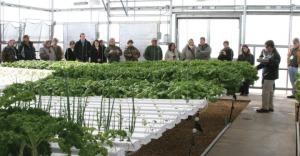 • Appropriate humidity – maintaining a proper humidity level is very essential, but often ignored by gardeners. One great way to maintain the humidity level for your indoor garden is by positioning a cool mist humidifier beside your garden.
• Appropriate humidity – maintaining a proper humidity level is very essential, but often ignored by gardeners. One great way to maintain the humidity level for your indoor garden is by positioning a cool mist humidifier beside your garden.
• Inspect properly and often – indoor gardening does have its negative side. Maintaining a clean working area and making use of products designed for indoor use help wonderfully to keep your garden pest free. Early detection and appropriate treatment will stop bugs from spreading to other parts of your indoor garden.
Wednesday 4 February 2015
Employ Rockwool in Hydroponic Gardening
Rockwool is an adaptable growing medium that can be utilized as a separate product or in a range of hydroponic systems. In this article, we’ll guide you through the essential procedure of how to employ rockwool as a part of hydroponic farming.
• Buying the product – buy a packet of 1 rockwool cubes for seed circulation. These are normally sold in suitable packs that fit ideally into a regular 10” x 20” plastic dish.
• Fine-tuning the pH level – relying on the brand of rockwool you buy, the subsequent instructions may differ. Fine-tune the pH level of the water to 5.5 employing lemon water if you’ve that on hand. Check and adjust the pH level as required employing a pH kit. Drench the rockwool until the medium is immersed completely. Don’t compress the back since the substance has been intended for an ideal air/water proportion for agriculture purposes.
• Planting the seeds – plant seeds in all cubes. Relying upon the seed, you may wish to plant numerous seeds in every cube.
• Including the nutrient solution – use a watery nutrient solution to water your plants. Throughout the primary stages of the plants’ growth cycle, the plants won’t require the complete supply of macronutrients supplied by the supplement solution. The quality of the supplement solution can improve as the plants grow into complete maturity.
• Transplanting into a fresh medium – the rockwool cubes are prepared to be transplanted as soon as the taproot is noticeable at the base of the cube. Right now, you’ll wish to figure out where you’d like to move your plant, whether it is a bigger rockwool block, a pot with loose stuff or a hydroponic system. Despite the fact, ensure the fresh media is pre-soaked with supplement solution or ideally running before transplantation to decrease the danger of transplanting blow.
 Be watchful while transferring rockwool to a soilless medium in light of the fact that the new medium can soak away water and dried up the rockwool block prior to the roots achieves the new soilless media. Accordingly, it’s vital for the plants’ root system to be settled prior to transplanting.
Be watchful while transferring rockwool to a soilless medium in light of the fact that the new medium can soak away water and dried up the rockwool block prior to the roots achieves the new soilless media. Accordingly, it’s vital for the plants’ root system to be settled prior to transplanting.
Rockwool is a great alternative for soilless substance for both commercial farmers and hobby gardeners.
So, don’t be too lazy! Employ these strategies to enjoy hydroponic gardening all through the year.
Wednesday 28 January 2015
5 Advantages of Urban Farming
Also known as urban agriculture, urban farming is a way for urban inhabitants to produce their own food, or have access to local foodstuffs. The tradition of urban farming is growing in fame in urban regions across North America. With the several advantages of urban agriculture and all that local food production has to provide, it is essential that we carry on to spread consciousness regarding how communities and individuals can institute a base of enhanced health, social communications, and economic opulence.
Here we’ll have a look at 5 advantages of urban agriculture:
 • Improves food-safety – food safety is having access to and being able to afford wholesome, safe foodstuff – and enough of it. This is a main worry for several households worldwide. Fortunately, urban agriculture contributes to better food security.
• Improves food-safety – food safety is having access to and being able to afford wholesome, safe foodstuff – and enough of it. This is a main worry for several households worldwide. Fortunately, urban agriculture contributes to better food security.
• Makes a sense of belonging – urban agriculture is 1 means to bring urban inhabitants together to institute a sense of community amongst people otherwise self-governing and, in several cases, isolated.
• Produces wholesome food – you get healthier, fresher food, herbs, fruits and vegetables – and are more likely to eat what is in the season, when you eat what is produced on an urban farm.
• Offers a learning prospect – urban farms offer city inhabitants an opportunity to grow their own foodstuff, and learn in the process. They can also learn about different gardening methods, the best mineral solutions, needed sunbeams, and controlling heat, among other things.
• Makes effective use of land – you can effectively make use of the land you do have to feed the people. Consider vertical or rooftop gardens: they take up minimum space but produce loads of fresh, wholesome food. Several hydroponic systems are installed perpendicularly, to fit anywhere you want even indoors!
Thursday 22 January 2015
How to Prevent Plant Stress for a Better Yield
Both plants and humans have several similar characteristics. They require stability to work in their best levels. This comprises consistent health condition and limited stress agents. Yes, plants do get stressed like human being. If growing states are altered a little, plants can be sent into shock, become noxious, or will just gradually wither away.
To stop plants from getting stressed, it is essential to establish an appropriate growing environment from the very beginning. This is a proactive means to make sure the best plant growth possible. It is particularly essential for growing food-producing plants, because your garden must be considered an investment. By restoring your hydroponic garden back to a secure environment, you can make your plant stress free.
Signs of plant stress:
• Dark patches
• Bleaches spots
• Wilting leaves
• No blooming
• Ragged leaves
• Dried edges on leaves
How to avoid plant stress:
The most ideal means to distress your plant is to maintain a secure growing environment. This must comprise:
• Maintain water, temperature & pH at a constant level
• Ignore breaking roots and take away dead leaves on a regular basis.
• Not keeping plant under too high or low light intensity
• Maintaining proper nutrient levels
• Maintaining appropriate ventilation, humidity and temperature levels.
• Preventing mold and pests and controlling them instantly as they appear, stressed plant encourages further growth of pests & diseases
• Ensuring appropriate Co2 levels are accessible for plant to perform photosynthesis.
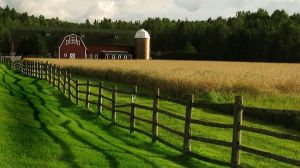 By adding natural bio-stimulants to your Hydroponic nutrient solution, you will assist your plant in several ways. You will aid plant roots better nourish the nutrient solution and improve the plants’ plant’s resistance to bugs & diseases. Both of these enhancements will better repare your plants to deal with stress. These enhanced conditions also guide to greater yields.
By adding natural bio-stimulants to your Hydroponic nutrient solution, you will assist your plant in several ways. You will aid plant roots better nourish the nutrient solution and improve the plants’ plant’s resistance to bugs & diseases. Both of these enhancements will better repare your plants to deal with stress. These enhanced conditions also guide to greater yields.Wednesday 21 January 2015
Guide to Clean Your Hydroponic System
Gowing your food indoors employing hydroponic gardening systems provide several benefits. Primarily, you’ll generally yield healthier plants in a quick manner. The indoor setting provides your plants a secure and sheltered sanctuary where proper growing conditions can be accomplished.
 Yet, despite the several advantages of hydroponic growing indoors, as the cultivator, you should still be aware of investing the proper amount of cleaning time into the hydroponic system itself. A dirty system will over time harm your plant’s health because of the prospective build-up of mold, bacteria and algae. The ideal way to deal with this potential issue is to get into a schedule of cleaning your hydroponics system on a regular basis.
Yet, despite the several advantages of hydroponic growing indoors, as the cultivator, you should still be aware of investing the proper amount of cleaning time into the hydroponic system itself. A dirty system will over time harm your plant’s health because of the prospective build-up of mold, bacteria and algae. The ideal way to deal with this potential issue is to get into a schedule of cleaning your hydroponics system on a regular basis.
• Take away plants – start off by taking away your plants from the hydroponic system. Uproot them into a detach reservoir, preferably with the same grow medium, pH levels and nutrient solution. Reproducing the plants’ home is the ideal way to make sure your plants do not go into shock after taken out of their setting.
• Disinfect the system – you will wish to dirt-free your hydroponic systems’ tank as well as the parts by cleansing the system with the help of a cleaning agent. You can find hydroponic cleaning solution online or at your local hydroponic shop. Several cultivators also prefer to employ a diluted bleach blend to clean their hydroponics system. However, you should always go with natural cleaning products when it comes to cleaning your hydroponic system.
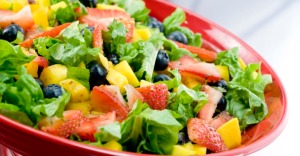 • Soak & wash – after the hydroponic system has been cleaned with the cleaning solution for about twenty-four hours, you will wish to rinse it out with unpolluted water. Circulate cleaned water through the hydroponic system for at least 1 to 2 fifteen-minute cycles. Throw away the water to rinse away any remaining cleansing solution deposit.
• Soak & wash – after the hydroponic system has been cleaned with the cleaning solution for about twenty-four hours, you will wish to rinse it out with unpolluted water. Circulate cleaned water through the hydroponic system for at least 1 to 2 fifteen-minute cycles. Throw away the water to rinse away any remaining cleansing solution deposit.
• After you have cleansed and rinsed your hydroponic system, you can start to return your plants into their habitat. Re-establish your grow medium and trigger your system as normal. Keep an eye on your plants for any symptom of stress or shock for the next day or so.
Every hydroponic system is diverse, but you may wish to get into the practice of sanitizing your system every month or so. You may also choose to dirt-free your hydroponics system in between plant growth phases.
Wednesday 14 January 2015
Grow Hydroponic Fodder for Your Livestock
For years we’ve known about the human being health advantages of consuming sprouts & juicing greens, so why not expand the happiness to our farms? As winter is around the corner several of our livestock are relegated to dirty, dry silage; but this can be ignored by employing hydroponic technology. Through the use of a customized NFT (nutrient film technique) channel, you’re able to grow general cereal grains into mineral dense, highly edible, fresh greens.
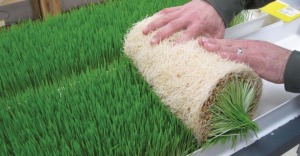 The hydroponic fodder can be produced in as little as 7 days and need no fertilizer. Some of the most common grains utilized to make hydroponic fodder are wheat, barley, and Black Oil Sunflower seeds. Several cultivators will make precise grain mixtures to cater to their individual livestock requirements, and some grain firms are even providing pre-mixed rations. This type of fodder can be nourished to a wide range of livestock ranging from chickens & turkeys to horses and cattle. The hydroponics fodder imitates these livestock’ normal diets much better than that of dried hay, and standard grain mixed rations. In several cases, nourishing hydroponics fodder in the months of winter can even help decrease the cases of foundering and colic in livestock like cows and horses.
The hydroponic fodder can be produced in as little as 7 days and need no fertilizer. Some of the most common grains utilized to make hydroponic fodder are wheat, barley, and Black Oil Sunflower seeds. Several cultivators will make precise grain mixtures to cater to their individual livestock requirements, and some grain firms are even providing pre-mixed rations. This type of fodder can be nourished to a wide range of livestock ranging from chickens & turkeys to horses and cattle. The hydroponics fodder imitates these livestock’ normal diets much better than that of dried hay, and standard grain mixed rations. In several cases, nourishing hydroponics fodder in the months of winter can even help decrease the cases of foundering and colic in livestock like cows and horses. One of the biggest obstructions that we encounter while cultivating sprouts for our livestock is producing a mold-free stuff while still upholding a higher level of sprouting. What makes this challenge is the fact that both sprouting seeds & fungal pathogens flourish in high moisture, warm conditions. By employing hydroponic NFT skill, newer fodder systems decrease ambient water and moisture loss often concerned with older misting type systems. This decrease in ambient moisture and enables us to employ these systems in a little warmer condition, motivating fertilization, but not mold expansion. Some of the most effective hydroponic fodder systems are operated in exceedingly regulated conditions employing ecological control tools often seen in indoor cultivation complexes and green house.
One of the biggest obstructions that we encounter while cultivating sprouts for our livestock is producing a mold-free stuff while still upholding a higher level of sprouting. What makes this challenge is the fact that both sprouting seeds & fungal pathogens flourish in high moisture, warm conditions. By employing hydroponic NFT skill, newer fodder systems decrease ambient water and moisture loss often concerned with older misting type systems. This decrease in ambient moisture and enables us to employ these systems in a little warmer condition, motivating fertilization, but not mold expansion. Some of the most effective hydroponic fodder systems are operated in exceedingly regulated conditions employing ecological control tools often seen in indoor cultivation complexes and green house.
Hydroponic fodders are steadily getting fame with farms of all sizes. Whether you’re looking to improve the quality of your livestock’s life or to lessen the high rate of hay, hydroponic fodder is the best ever solution.
Subscribe to:
Posts (Atom)

